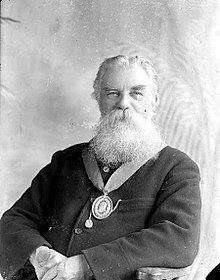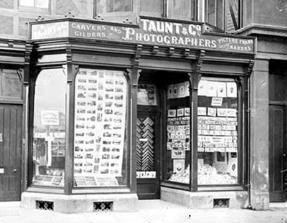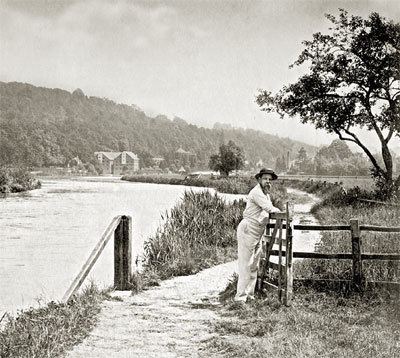Nationality British Books The Thames of Henry Taunt | Role Photographer Name Henry Taunt | |
 | ||
Awards Foresters Friendly Society | ||
'Every Man a Soldier' by Henry Taunt, 1914
Henry William Taunt (1842–1922) was a professional photographer based in Oxford, England. His studio was in Broad Street, Oxford.
Contents

Life

Henry Taunt was born in Penson's Gardens in the parish of St Ebbe's, Oxford. He was the son of a plumber and glazier, also Henry, and his wife Martha, who came from West Ilsley in Berkshire.
At the age of 14, Taunt joined Edward Bracher as a member of staff in 1856 at his photographic premises based at 26 High Street, Oxford. In 1868 he set up his own photographic business in Oxford. Moving from his Broad Street studio, Taunt traded from 1894–95 at 41 High Street, Oxford and later moved to 34 High Street; remaining here from 1895 until 1906. After this time he moved all his work to his home on Cowley Road.
In 1893 Henry Taunt was elected a Fellow of the Royal Geographical Society. This was a substantial honour in recognition of the notable feat of cartography and accuracy of measurements that featured in the New Map of the Thames.
Work
Henry Taunt's black-and-white photographs are mainly views of Oxford, Oxfordshire (and surrounding counties) and the River Thames. He produced the first pocket guide to the River Thames to be illustrated with photographs. In the 1860s, it covered the upper Thames, but it expanded its range over several editions. The wet collodion process, invented by Frederick Scott Archer, was the best means to capture negative images on glass until the end of the 1870s, by which time many of Taunt’s pictures for his Illustrated Map of the Thames had been taken. He would row his skiff to a location, set up his dark tent, set up his camera and tripod, sensitise and coat the glass plate, immediately make the two- or three-second exposures, develop and fix the images, wash them in river water, perhaps dry them in the sun and row back to his lodgings or set up camp with his assistants. At the beginning of the 1860s this was an notable feat of skill. Henry Taunt was at the forefront of Victorian location photographic technology.
Legacy
Taunt's photographs are reproduced in many books and form a useful historical record of social history and architecture. Major collections of his work are held by English Heritage: 14,000 images, Oxfordshire County Council: Oxfordshire Studies and the River and Rowing Museum at Henley-on-Thames.
